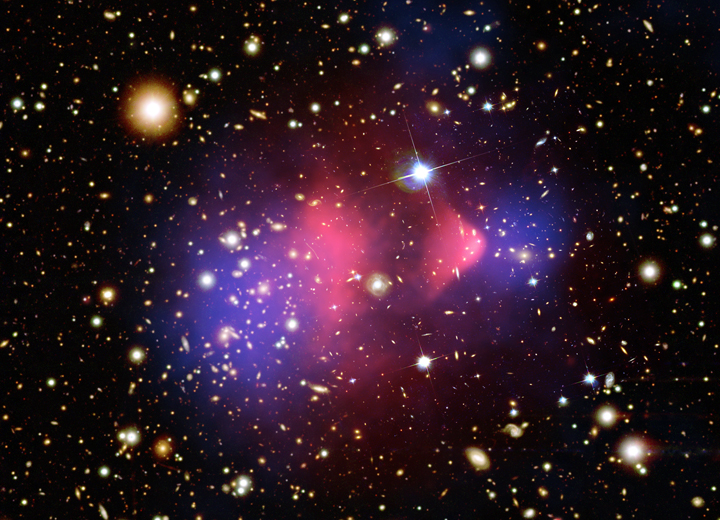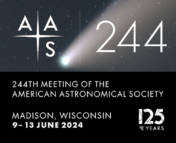
Welcome to the summer American Astronomical Society (AAS) meeting in Madison, WI! Astrobites is attending the conference as usual, and we will report highlights from each day here. You can also follow us on Bluesky at astrobites.bsky.social for more meeting content. We’ll be posting once a day during the meeting, so be sure to visit the site often to catch all the news!
Plenary Lecture: Scanning the X-ray Sky for Dark Matter, Kerstin Perez (Columbia University) (by Nathalie Korhonen Cuestas)
Throughout the universe, we’ve detected the indirect signatures of dark matter: a hypothetical form of matter that does not interact with normal matter through electromagnetism and makes up most of the matter in the universe. It’s seen in the rotation curves of galaxies, through gravitational lensing in the Bullet Cluster, and in the anisotropies of the cosmic microwave background. Dr. Kerstin Perez (Columbia University), the conference’s last plenary speaker, works to characterize the properties of dark matter through observations of X-ray photons, bringing us closer to understanding the matter that makes up so much of the universe.
It’s possible that dark matter particles interact through forces that we can’t currently understand using the standard model, producing photons with X-ray wavelengths. Perez leverages these interactions to look for “extra” photons as a signature of dark matter. However, it can be difficult to pinpoint which photons are coming from dark matter particles, and which photons are produced by normal, baryonic matter. Ideally, you’d observe a region with a high dark matter density and a low (or very well understood) background of photons from baryonic sources. Even though this technique can be tricky, Perez noted that even when a photon excess doesn’t end up being due to dark matter, it can still tell us something new about the background source.
To make her observations, Perez uses the NuSTAR instrument in a novel way. Normally, astronomers use photons that have traveled through the optics of the NuSTAR telescope, resulting in a small field of view. But one astronomer’s trash is another astronomer’s treasure; Perez uses photons that have come in from very large angles and hit the detector directly, rather than going through the optics system. This results in a larger pacman-shaped field of view, which can be cleverly aligned with a dark matter halo or a star, allowing Perez to search for photons produced by dark matter.
Dark matter particle theories come in lots of different flavors, and in her talk, Perez focused on two: sterile neutrinos and axions. Both types of particles only interact with gravity, and they could address other open questions in particle physics, not just that of dark matter. Perez showed observations of dark matter halos and Betelguese (a well-observed red supergiant) from NuSTAR, and while neither yielded a clear cut detection of dark matter, they do put strong constraints on the properties of dark matter. As these constraints get more stringent, we can get closer to either ruling out a theory or homing in on the true value. Perez ended by highlighting three proposed X-ray missions (HEX-P, GRAMS, and IAXO) that could apply this method with more precision, hopefully bringing us closer to understanding the nature of dark matter.

